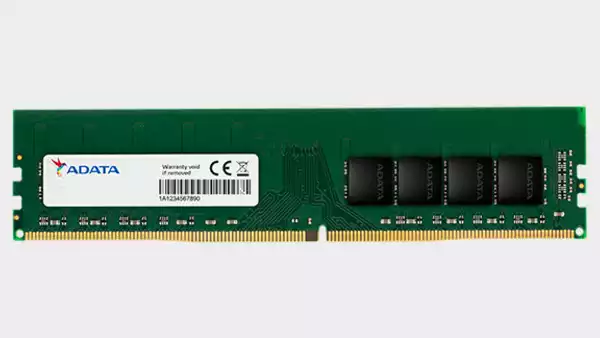Adata plans to showcase its first DDR5 DRAM module at CES 2021, a technology exhibition that will take place virtually next week. The new module marks another step toward the widespread adoption of the next-generation memory standard, and will prepare Adata for the first products to support DDR5, likely Intel Alder Lake chips later this year.
Adata has a head start on CES 2021 and has already announced several headliners for the show. Among laptops, SSDs, and "gaming gum" (PC Gamer is a self-confessed gaming gum connoisseur), Adata has also mentioned a next-generation DDR5 module with "up to" 8,400 MT/s.
All we know about these modules is that they are currently sold under the Adata brand, not the gaming-focused XPG brand. Also, no clear model name or capacity is given, so we can only assume that this is a teaser for a production launch later this year, rather than a specific product announcement.
"The future of DRAM is here in the form of the ADATA DDR5 DRAM module," Adata said in a press release. The modules will deliver significantly higher speeds, higher capacities, lower power consumption, and more bandwidth per CPU core than their predecessors." The new DDR5 modules offer up to 4x higher capacity, lower power consumption to 1.1V, and speeds up to 8400 MT/s."
But you won't see 8,400 MT/s-class modules yet. Adata is a fabless memory manufacturer and will rely on other fabs to manufacture its chips. Micron and SK Hynix will initially launch at speeds closer to 4,800-5,600 MT/s, with faster speeds in a few years.
This means that the initial wave of DDR5 RAM, which is expected to be fully introduced in late 2021, may not run faster than some current high-end DDR4 kit. However, DDR5 has advantages over the currently widely used RAM sticks.
DDR5 requires a lower voltage than DDR4, 1.1V by default, and can run at speeds of 5,000 MT/s or more. Therefore, as is the case with today's high-performance DDR4 kits, a bit more power can provide higher overclocking performance in addition to stock performance.
Although perhaps less relevant to gamers, DDR5 also offers greater capacity per DRAM chip. Both Intel and AMD are said to support DDR5 in their next-generation data center chips.
DDR5 also incorporates support for EEC (error correction code). This is usually reserved for servers and workstations now, but will soon be found in gaming PCs in large numbers, perhaps pleasing Linux creator Linus Torvalds in the process.
As for gaming performance, faster memory has proven to be an important consideration in building a gaming PC. However, to take advantage of DDR5, you need a rig-compatible processor, and since Intel Alder Lake is said to be coming out with a new memory standard, along with a new hybrid architecture design and socket, DDR5 could be coming this year.
We are still waiting for further evidence that DDR5 is indeed part of Intel's new hybrid package; according to a recent press release from Adata (via TechPowerUp), the company is working with MSI and Gigabyte on "the latest Intel platform" and is working on DDR5 memory with MSI and Gigabyte, so it seems at least likely.
AMD is likewise rumored to support DDR5 in its Zen 4 processor, but we are unlikely to hear about this until late 2021 or 2022.
In the meantime, one should consider the Intel Rocket Lake CPUs, which are expected to appear in March.


Comments